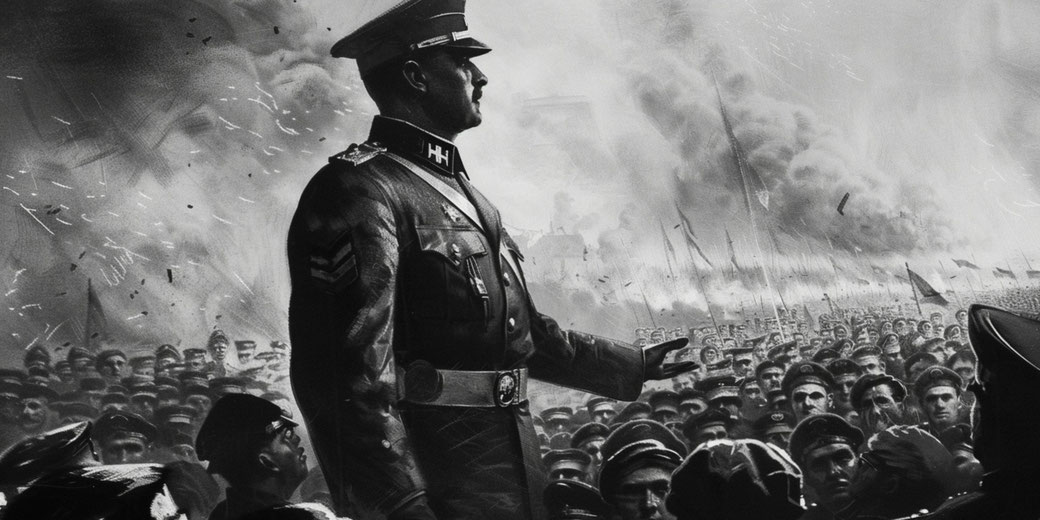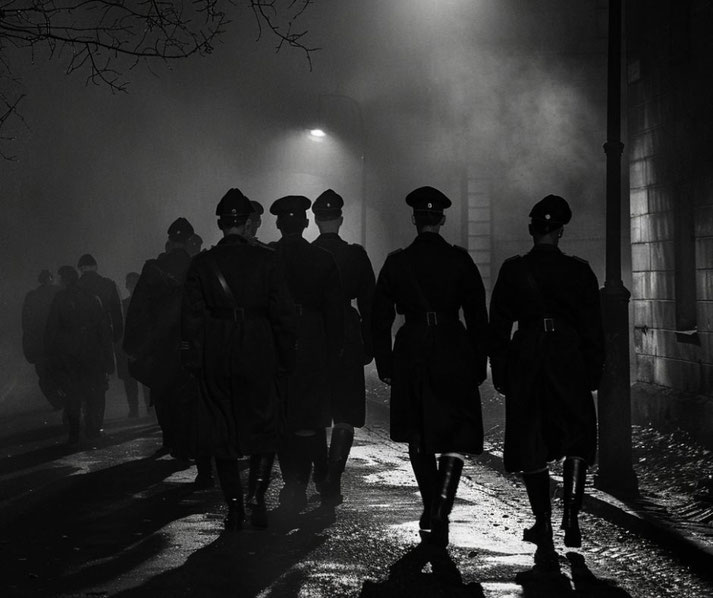The violent rise and bloody fall of Ernst Röhm in Nazi Germany

As the early 1930s unfolded, Ernst Röhm rose to prominence as the leader of the Sturmabteilung (SA), the Nazi Party’s paramilitary wing.
The SA would play a crucial role in Hitler’s ascent to power. As its leader, Röhm wanted to transform the SA into the new German army. However, this would ultimately lead to his downfall.
At its core, this failure was the result of the complex relationship he had with Hitler: once a trusted alliance, it ended with a deadly assassination.
Röhm’s early military career and entry into the Nazi Party
Ernst Röhm was born on November 28, 1887, in Munich, Bavaria. He was part of a conservative middle-class family.
His father was a railway official, but Röhm developed a robust affinity for military discipline, leading him to join the German Army in 1906 as a cadet.
He quickly advanced through the ranks, and by the outbreak of World War I in 1914, Röhm served as an active officer.
He even earned the Iron Cross, First Class. However, as the war progressed, Röhm slowly became deeply disillusioned with the German monarchy's handling of the war effort.
Following Germany’s defeat in 1918, Röhm continued his military career in the much-reduced post-war Reichswehr.
In this role, he witnessed firsthand the tumultuous political upheavals that gripped Germany, including the rise of various paramilitary groups.
Among these, the nascent Nazi Party caught his attention, especially due to its emphasis on national revival and militarism.
Ernst Röhm's involvement with the Nazi Party began in earnest when he met Adolf Hitler in 1919.
Impressed by Hitler's charismatic leadership and shared disdain for the Weimar Republic, Röhm saw in the Nazi Party a vehicle for the radical transformation of Germany.
Both men shared a vision of a restored, militaristic Germany, leading to Röhm's early and fervent support for Hitler's leadership of the Nazi Party.
He officially joined the party in 1920 and quickly established himself as a pivotal member due to his military background and organizational skills.
In return, Hitler valued Röhm's experience and loyalty. As a result, he assigned him the role of developing the SA.
Röhm’s leadership of the SA (Sturmabteilung)
Ernst Röhm took command of the SA (Sturmabteilung) shortly after its inception in 1920.
The organization was designed to serve as the Nazi Party's paramilitary arm, which was responsible for protecting party meetings, marching in Nazi rallies, and fighting against political opponents.
Röhm, who leveraged his military background, structured the SA with strict discipline and a clear hierarchy that mirrored military organizations.
Under his leadership, the SA grew from a few hundred members to approximately 3,000 by the end of 1921.
Röhm's influence was pivotal in defining the aggressive character of the SA. He recruited extensively from the ranks of unemployed and disenchanted World War I veterans, who brought with them a fierce loyalty and a willingness to engage in street violence.
This group became notorious for its aggressive tactics, clashing frequently with communist groups and disrupting political meetings.
Within this turbulent environment, Röhm cultivated a sense of brotherhood and militant zeal among his troops, emphasizing the importance of loyalty to the party’s cause.
By 1923, Röhm had become one of Hitler’s most trusted lieutenants, instrumental in planning and executing the Beer Hall Putsch, an attempted coup in Munich against the Weimar government.
However, the Putsch failed and led to Hitler's imprisonment. During Hitler's incarceration, Röhm held the SA together, although the organization was officially banned and under constant scrutiny by the government.
His efforts ensured that upon Hitler’s release, the Nazi Party could continue to rely on the SA as a powerful tool for intimidation and violence.
Röhm's unwavering dedication during these early years solidified his status within the party.
As a result, the SA's numbers swelled, and by 1930, membership had surged to over 400,000 men.
With these growing numbers, the SA played a critical role in expanding the Nazi Party's influence, particularly through acts of intimidation and disruption directed against the communists and other political adversaries.
Röhm's vision for the SA and conflicts with the SS
Ernst Röhm harbored a revolutionary vision for the SA. He saw it as the nucleus of a future totalitarian state's army.
His ultimate plan was to merge the traditional Reichswehr, the German army, with the SA to create a "people's army" that would embody the Nazi spirit more fully than the conventional military establishment.
Röhm argued that the SA, with its robust membership and fierce loyalty to the Nazi cause, was uniquely positioned to embody the militaristic ethos of National Socialism.
However, this vision brought Röhm into direct conflict with other powerful factions within the Nazi Party, notably the SS (Schutzstaffel) led by Heinrich Himmler.
The SS was an elite paramilitary group that, unlike the SA, sought to maintain an image of disciplined precision and was seen as more politically reliable by the conservative elites in Germany.
From their inception, the SS were ideologically aligned with Adolf Hitler's views on race, making them a more attractive option for Hitler's long-term plans.
As the 1930s progressed, this ideological alignment increasingly set the SS apart from the more populist and unruly SA.
Amidst this growing tension, the rivalry between the SA and the SS became a source of genuine concern for Hitler.
The SA's increasing power and Röhm's outspoken push for political and military reforms were seen as threats to Hitler’s authority and the stability of the Nazi regime.
This concern was exacerbated by Röhm's criticisms of the Reichswehr leadership, whom he openly disdained as "old reactionary corps," and his insistence on integrating the SA into the state’s military structure.
By 1934, the bond between Hitler and Röhm had frayed significantly; trust and loyalty gave way to suspicion and intrigue.

The 'Röhm Purge' on the Night of the Long Knives
Finally, Hitler decided to eliminate this threat to ensure his absolute control over the Nazi Party and the German state.
This resulted in the 'Röhm Purge', also known as the Night of the Long Knives, which occurred from June 30 to July 2, 1934.
Adolf Hitler, along with key figures like Heinrich Himmler and Hermann Göring, orchestrated this series of political executions primarily targeting the leadership of the SA, including Ernst Röhm.
The purge was swift and brutal. Röhm and many of his top aides were arrested by SS units and summarily executed without trial.
This move was publicly justified by the Nazi leadership as a necessary action to prevent a supposed imminent coup by Röhm and his followers.
In total, approximately 85 people were killed during the purge, although some estimates suggest the number might be higher.
Among the victims were also other political adversaries and conservative critics of the Nazi regime.
Following the purge, the power of the SA was significantly reduced, and the SS rose to become the dominant paramilitary group in Germany.
This event also signaled to all other potential rivals that any dissent or challenge to Hitler's rule would not be tolerated.
Consequently, the Night of the Long Knives consolidated Hitler's power but also demonstrated his willingness to use ruthless violence to achieve political stability and obedience within the party.
What do you need help with?
Download ready-to-use digital learning resources
Copyright © History Skills 2014-2025.
Contact via email
With the exception of links to external sites, some historical sources and extracts from specific publications, all content on this website is copyrighted by History Skills. This content may not be copied, republished or redistributed without written permission from the website creator. Please use the Contact page to obtain relevant permission.





